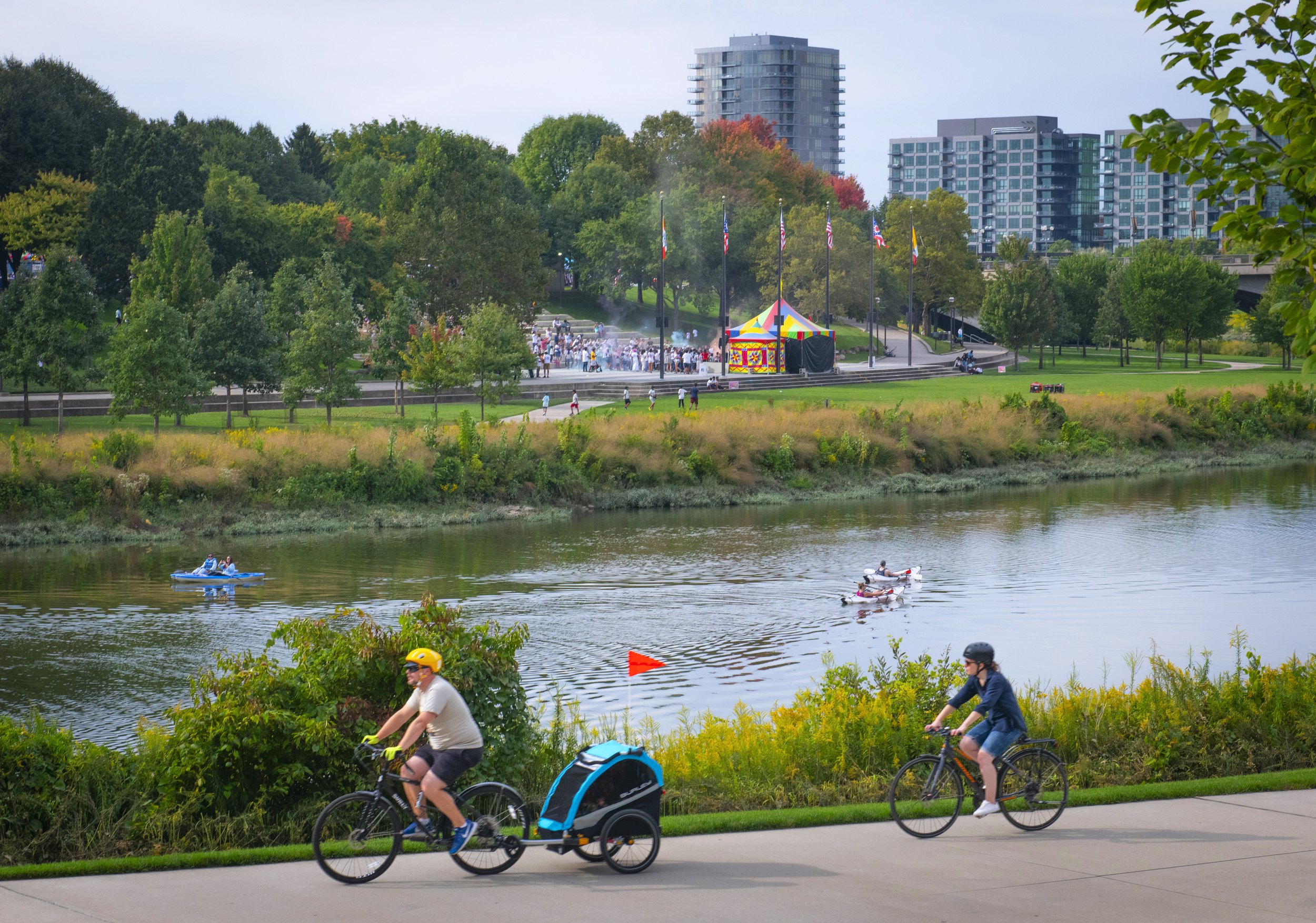
LAF Landscape Performance Series - Scioto Mile and Greenways
Measuring the environmental, social, and economic benefits of a high-performing landscape.
MKSK and The Ohio State University partnered to measure the impacts of the Scioto Mile and Greenways project in downtown Columbus, Ohio as part of the Landscape Architecture Foundation’s (LAF) Case Study Investigation (CSI) program. The CSI program pairs faculty-student research teams with design practitioners to document the benefits of exemplary high-performing landscape projects. Through the process, research teams develop measurements to quantify the environmental, social, and economic benefits and produce Case Study Briefs for LAF’s Landscape Performance Series. The Scioto Mile and Greenways added 36 acres of green space to the downtown riverfront bringing with it a host of recreational amenities, destination spaces, and a catalyst for downtown development. This investigation measured the results of those benefits.
A summary of the findings are outlined below and can also be found on LAF’s Landscape Performance Series page.
Environmental
Increased riparian edge habitat by 5.4 acres, the size of 4 football fields and an estimated fourfold (200%) increase over previous conditions. Of the riparian habitat plant species, 25% have special value for pollinators, 50% provide food/habitat for birds, 25% provide food/habitat for small mammals, and 39% are attractive to butterflies and moths with 27% being larval host plants.
Achieved high ecological integrity of plant communities observed on the site as demonstrated by an Adjusted Floristic Quality Index (FQI) score of 35, which corresponds to a high-quality vegetation status.
Increased macroinvertebrate species from 42 to 66 (sensitive species increased from 2 to 28) and fish species from 23 to 30 (sensitive species increased from 1 to 3), as compared to pre-project conditions, including 5 species considered threatened in the state of Ohio. This led to an improvement in habitat assessment by the Ohio Environmental Protection Agency from Very Poor to Very Good for macroinvertebrates and from Fair/Good to Very Good/Exceptional for fish.
Lowers site surface temperatures by an estimated weighted average of 10 °F compared to previous conditions.
Sequesters an estimated 5.25 tons of atmospheric carbon annually in newly planted trees, equivalent to driving a single passenger vehicle approximately 11,790 miles.




Social
Attracts an estimated 40,000 people per week in summer months to engage in more than 35 types of recreational activities.
Increased navigable riverway for paddle sport recreation by 1.3 miles due to the removal of the dam and addition of water entry points.
Improves quality of life according to 94% of 69 surveyed users. 100% of 67 surveyed users self-reported an increase of mood and 65% of 69 surveyed users reported an increase in physical activity since the site opened to the public.
Created 36 acres of new park space in the Downtown Columbus and Franklinton neighborhoods, a total increase of 30% and a 2.3-acre increase per 1,000 residents. Of the 15,698 residents in the neighborhoods, approximately 33% are minorities and approximately 15% live in poverty.
Economic
Supports local businesses, with 78% of 82 survey respondents reporting patronizing local businesses. 48% reported spending $15-20, and 30% reported spending less than $15 per visit.
Contributes to the economic development of downtown Columbus and the East Franklinton neighborhood within a half-mile radius of the site, with 584 apartment units constructed and more than 2,200 planned. 214,000 sf of commercial space was added to the area with at least 243,200 sf planned. In total, $320 million in investment capital has been injected into the area, with an additional $620 million in planned investments.
Source for above: Steiner, Halina and Sarah Sanders. “Scioto Mile and Greenways Methods.” Landscape Performance Series, Landscape Architecture Foundation, 2021.
The Landscape Performance Series Case Study Briefs are a searchable database of over 200 exemplary built projects with quantified environmental, economic and social benefits. The Case Study Briefs are produced by the LAF, working in conjunction with designers and/or academic research teams to assess performance and document each project. (Source: https://www.landscapeperformance.org/case-study-briefs)

